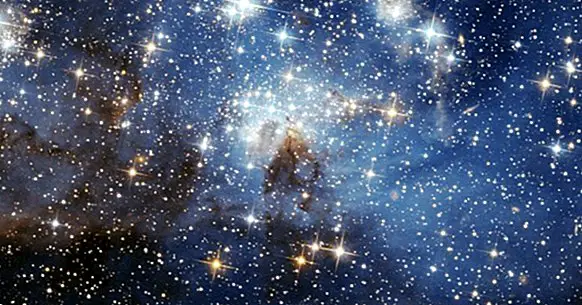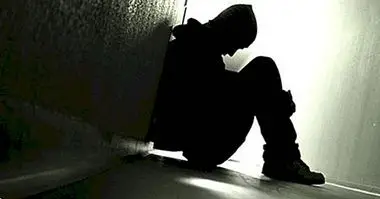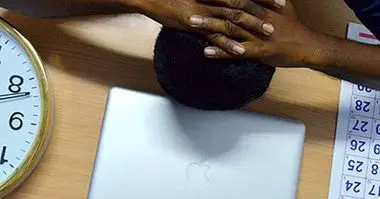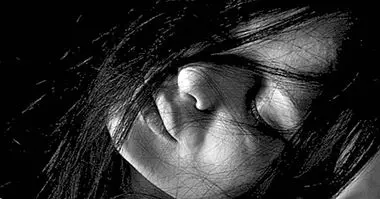Astrophobia (fear of the stars): symptoms, causes and treatment
The immensity of the universe, space or cosmos, as well as the large number of stars and celestial bodies that inhabit it, can be as fascinating as it is intimidating for the people who observe it. However, if this feeling becomes an exacerbated fear towards them, it is very possible that we are facing a case of astrophobia .
Throughout this article we will discuss this type of specific phobia. We will analyze the characteristics that distinguish it from a normal fear and we will describe its main symptoms, causes and treatments.
- Related article: "Types of phobias: exploring the disorders of fear"
What is astrophobia?
Astrophobia is a psychological alteration that is part of anxiety disorders . Based on its own name, it is easy to deduce that it is an excessive, irrational and uncontrollable fear of the stars or celestial bodies found in the cosmos or the universe.
If we take into account the etymological roots of the word, "astro" is a term that comes from Latin and that refers to all types of celestial bodies located in outer space and that, moreover, are visible from the earth; while the concept "phobia" finds its origin in the Greek word "phobos" which means flight or fear.
As mentioned at the beginning of the article, astrophobia is considered an anxiety disorder in which the person experience an excessive and irrational fear of the stars , and in which he experiences a very high anxiety each time the affected person observes the stars
Although astrophobia is a type of phobia with very little incidence among the population, this can become a highly disabling disorder , in which the patient is likely to go to the extreme of being kept at home so as not to run the risk of sighting the sky.
Therefore, this mental illness can modify and limit the behavior of the person, reducing their quality of life. Luckily, there are very effective treatments for this type of specific phobias thanks to which the person is able to overcome this and lead a normal life.
- Maybe you're interested: "Types of Anxiety Disorders and their characteristics"
Clinical characteristics of the disorder
Like the rest of phobias or anxiety disorders, astrophobia has a series of clinical features that distinguish it from the usual or non-pathological sensations of fear or fear .
Therefore, in order to differentiate astrophobia from a non-pathological fear, it must fulfill the following characteristics:
- Excessive and disproportionate fear taking into account the real danger of the situation or phobic stimulus.
- Irrational fear , given that the person is unable to offer a logical explanation to this.
- Inability to control the emotions of fear and anguish.
- Generation of avoidant behaviors of the situation.
- Fear appears constantly and permanently through the different feared situations.
What are the symptoms?
The main symptoms of astrophobia are those related to the experimentation of great anxiety. This clinical picture does not manifest itself continuously over time, but only in those cases in which the person faces or anticipates what he will face with the phobic stimulus; in this case, the stars and celestial bodies .
These symptoms can be classified into three groups, according to physical, cognitive or behavioral symptoms.
1. Physical symptoms
Before the appearance of the situation object of the phobia, the central nervous system experiences an excessive increase in its activity , generating a large number of changes and alterations at a physiological and organic level.
This physical symptomatology includes:
- Increase in the cardiac rate .
- Increase of breathing
- Palpitations .
- Feeling of suffocation.
- Muscle tension.
- Increased levels of sweating.
- Headache .
- Gastric alterations.
- Dizziness .
- Nausea and / or vomiting
- Fainting and loss of consciousness.
2. Cognitive symptoms
The appearance of the physical symptomatology is subject to a series of incoherent or extravagant beliefs and ideas about the situation or phobic stimulus and its presumed dangerousness. These ideas make up the cognitive symptoms and usually appear in advance generating anxiety symptoms.
Among the cognitive symptoms of astrophobia are:
- Distorted thoughts about stars and celestial bodies.
- Ideas of intrusive and uncontrollable nature that flood the patient's mind.
- Obsessive speculations about the possible dangers of the stars.
- Catastrophic imagination in relation to the feared object.
- Fear of losing control and not being able to manage the situation favorably.
3. Physical symptoms
The main consequence to the symptoms of anxiety, previously mentioned, is the realization of a series of behaviors or behavior patterns that arise in response to the feared stimulus.
These physical symptoms appear with the purpose of avoiding the feared circumstances or of fleeing them in case it could not be avoided. In this way, the person with astrophobia Try to avoid experiencing unpleasant emotions like anxiety and anguish.
These patterns of behavior are known as avoidance behaviors and escape behaviors. In the avoidance behaviors, the person carries out a series of acts with the intention of eliminating the possibility of having to face them.
On the other hand, escape behaviors appear when the person suffering from astrophobia is inevitably faced with the dreaded situation or stimulus. Throughout the situation, the person will perform all kinds of acts or behaviors that allow him to escape It is in the fastest way possible.
What causes does it have?
Although, for the moment, completely reliable causes have not been established to explain phobias. The researchers point to the possibility that experimentation with highly traumatic events or experiences or with a great emotional burden, together with a genetic predisposition to the harmful effects of stress, establish a basis for the appearance of a specific anxiety disorder such as astrophobia.
In addition, there are other factors such as personality, cognitive styles or vicarious learning, which may favor the emergence and development of an irrational and uncontrollable fear such as that of phobias.
Treatment of this phobia
Despite the low incidence of astrophobia, there are very effective treatments and interventions common to the rest of specific phobias thanks to which the person can overcome their fear and continue with their life in a normal way .
In the case of specific anxiety disorders such as phobias, The type of intervention that is most effective is cognitive-behavioral therapy , where through systematic desensitization (DS) the person can get used to face the object of their fear.
In this systematic desensitization the patient is exposed in an imaginary way to a series of situations related to the phobia, which are arranged gradually, from less to greater degree of fear. Also, relaxation techniques are applied to reduce the level of anxiety.
Another technique widely used is that of the live exhibition , through which the person is exposed directly and gradually to the feared situation. However, these techniques should always be carried out under the supervision and guidance of a mental health professional.



















